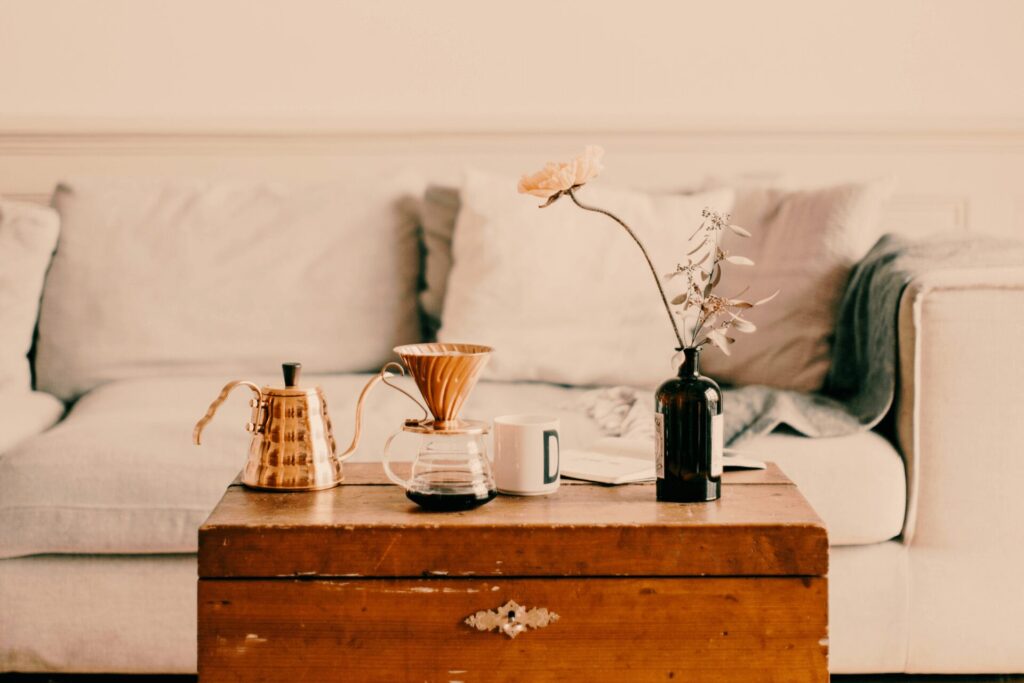
We are reader-supported. When you buy through links on our site, we may earn an affiliate commission.
Trends come and go in every industry, and these shifts apply to interior design. How you design a home in 2024 significantly differs from your grandparents in 1974. This year marks a new wave of construction and decor as interior designers wave goodbye to outdated practices. What can you leave behind when decorating your home? Here’s an expert-backed guide on outdated trends and what you should replace them with.
What Are Interior Designers Saying Goodbye To?
Design trend opinions differ from one interior designer to the next. What worked just a few years ago might not be in vogue today, so paying attention to trends is essential. We talked to experts who said to leave these five trends behind in 2024.
1. All-White Homes

White has long been a popular choice for interior designers because people associate it with purity and cleanliness. The color is also easy to mesh with others in your rooms. However, too much white can make your home bland.
Andre Kazimierski, CEO of Improovy, says this decade has phased out the all-white trend because it’s too basic.
“We’re now getting to the point where all-white homes are starting to feel a bit dated,” he said. “This trend of all-white everything — from walls to cabinets to countertops to wood — took off in the mid-2010s when the overall trend of minimalism became popular.”
So, what’s the better alternative? It’s simple, according to Kazimierski. He says attitudes have shifted in favor of colors to provide a warmer feeling inside the home.
“In recent years, color has absolutely come back, and people are changing their attitudes toward the all-white style, finding it to appear ‘cold’ and, yes, dated,” he said. “I’m all for banning the all-white aesthetic in favor of incorporating, at the very least, some pops of color.”
2. Excessive Minimalism

Why do people opt for an all-white interior? Some homeowners hire an interior designer and ask them to create a minimalist look. While minimalism works in some capacity, Garrett Ham says real estate should reconsider this approach. The CEO of Weekender Management says consumers have changed their tune and are reverting to old trends from the last century. Minimalism is no longer the sought-after trend it once was.
“This style — characterized by sparse furnishings and a lack of decorative elements — often leaves spaces feeling cold and unwelcoming,” he said. “Our guests frequently express a preference for homes that feel lived-in and cozy, suggesting an increasing desire for warmth and personality in the spaces they inhabit temporarily.”
Minimalism can work if you decrease clutter and possessions in your home. This interior design strategy encourages mindfulness and being present in your home to help you embrace life. So, how can you find a happy medium with minimalism and strategic decor? Ham says to consider biophilic design.
“Incorporating elements of biophilic design — which focuses on connecting occupants more closely to nature — has consistently shown to enhance guest satisfaction,” he said. “Through Weekender Management, I’ve seen properties that integrate natural light, indoor plants, natural materials, and earthy colors not only perform better in the rental market but also receive glowing reviews for the tranquil and rejuvenating atmosphere they create.”
Biophilic design is an excellent strategy to make your home feel warmer and more inviting for guests. These principles can also benefit your mental health because you’re close to plants. A 2022 study finds biophilic design positively supports mental health through environmental consciousness and integrating nature into human life.
3. Neon Colors
Adding bright colors is an excellent strategy to combat minimalist design. With that said, you may wonder if there is such a thing as too much color. Some palettes may clash or overwhelm a room. Khalid Ibrahim — founder and principal of iDiM Architects Inc. — says neon colors should be on the chopping block this year.
“These shades can be overbearing and quickly outdated, affecting the room’s overall ambiance negatively,” he said. “Neon colors may offer a vibrant pop, but incorporating them into a home can lead to visual chaos.”
What can replace neon colors and still bring personality to a home? Ibrahim says timeless elegance will beat the come-and-go trends. If you want style and comfort, classic palettes with subtle accents are the way to go.
4. Industrial Finishes
When you’re at home, you don’t want to feel like you’re on a factory floor or a dentist’s office. However, you get these vibes in houses implementing industrial-inspired design. Kristin Hintlian, co-owner of Bonsai Builders, says excessive industrial finishes take away from the spirit of a home and deserve reconsideration from interior designers.
“This trend — which often incorporates raw concrete, exposed beams and ductwork — can lead to spaces that feel more like warehouses than homes,” Hintlian said. “While this aesthetic does have its appeal in moderation, its overuse can create cold, impersonal environments that lack the comfort and warmth many homeowners seek.”
How can you make your home more inviting and appealing to guests? Hintlian says to use natural materials like wood, stone and plants for aesthetics and sustainability. These design options are typically less energy-intensive and include renewable resources.
“These elements bring a sense of warmth and life to homes, counteracting the starkness of the industrial trend, she said. “This approach aligns with the broader move towards eco-friendly and sustainable construction, reflecting a growing desire among homeowners to create spaces that are not only stylish but also respectful of the environment and conducive to well-being.”
5. Fast Furniture
By now, you’ve probably heard about fast fashion and its environmental impact. Research shows it negatively impacts water quality through its significant carbon footprint. What about fast furniture? Some manufacturers cut corners and compromise structural integrity when producing couches, tables and chairs. Chris Langley — director of Just Value Doors Ltd. and interior designer — says it’s time to leave this furniture trend behind.
“The era of disposable, low-quality furniture must end,” he said. “It’s time to prioritize durability and sustainability in our design choices, reflecting a deeper commitment to environmental responsibility and lasting value.”
How can you make your furniture more sustainable? Look for furnishings made from recycled materials, ethically sourced wood and renewable resources. Avoid fixtures with volatile organic materials (VOCs) because they can harm human health. For example, these chemicals can damage your kidneys and central nervous system.
Decor Advice From Expert Designers
Ultimately, your interior design is up to you. The design approach for each room should fit your style. If you want to keep up with the times, use expert advice to move past these five trends. Leaving behind fast furniture and industrial finishes leads to a more sustainable and human-centric design.
Follow us on X for more interior design advice.










